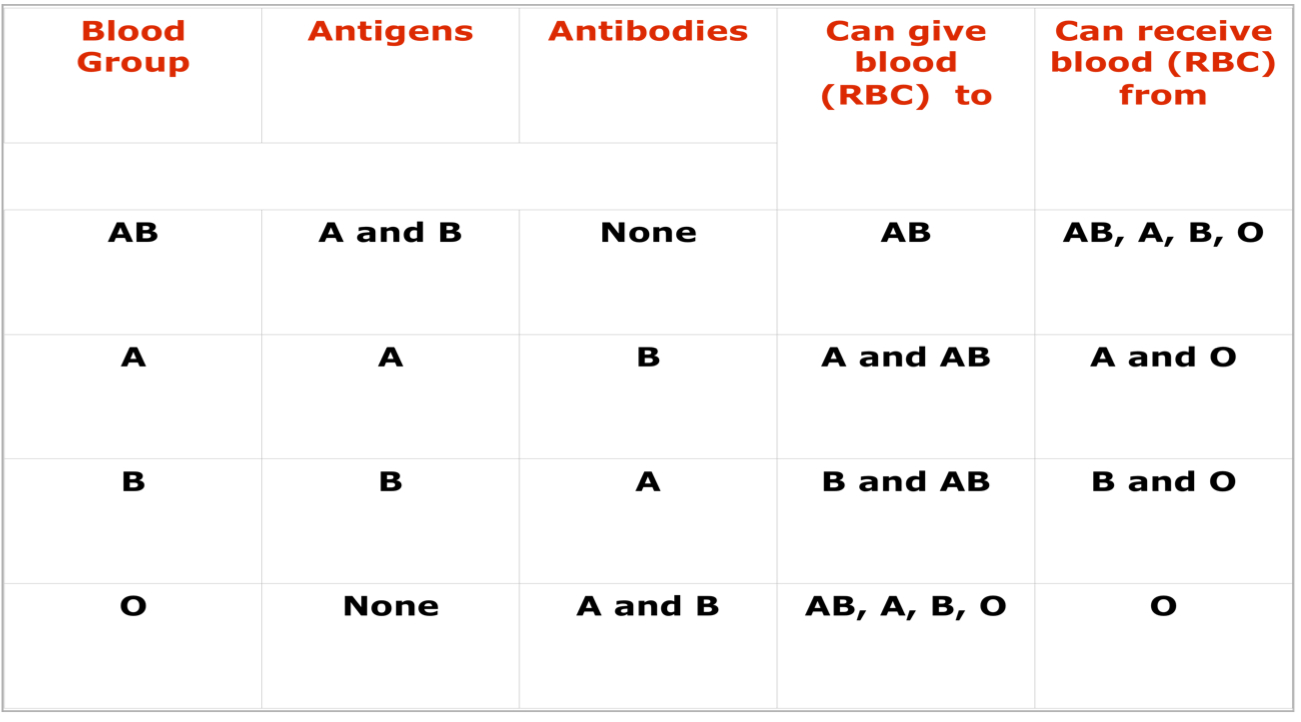CBSE Class 11 Biology Chapter 18 Revision Notes Part 1
Chapter 18: Body Fluids and Circulation
The most crucial human body fluids are blood and lymph. Plasma, white blood cells, red blood cells, and platelets make up blood. Lymph is a clear liquid that flows inside lymphatic veins.
Blood
Blood is the most commonly used body fluid by most of the higher organisms including humans. It is a special connective tissue consisting of a fluid matrix, plasma, and formed elements.
Plasma
Plasma is a straw coloured, viscous fluid constituting nearly 55 per cent of the blood. Plasma consists of:
- 90-92 per cent water
- 6-8 per cent proteins (Fibrinogen, globulins and albumins are the major proteins)
- Small amounts of minerals like Na+, Ca++, Mg++, HCO3–, Cl–, etc.
- Glucose, amino acids, lipids, etc.
Formed Materials
Erythrocytes, leucocytes and platelets are collectively called formed elements and they constitute nearly 45 per cent of the blood.
-
Erythrocytes – Also known as red blood cells (RBC), erythrocytes are devoid of nucleus in most of the mammals and are biconcave in shape. They have a red coloured, iron containing complex protein called haemoglobin, hence the colour and name of these cells. A healthy adult man has, on an average, 5 millions to 5.5 millions of RBCs mm–3 of blood. RBCs have an average life span of 120 days after which they are destroyed in the spleen (graveyard of RBCs).
-
Leucocytes – Also known as white blood cells (WBC), leucocytes are colourless due to the lack of haemoglobin. They are nucleated and are relatively lesser in number which averages 6000-8000 mm–3 of blood. The two main categories of WBCs are – granulocytes and agranulocytes. Lymphocytes (20-25 per cent) are of two major types – ‘B’ and ‘T’ forms, and both of these are responsible for immune responses of the body
-
Platelets – Also called thrombocytes, platelets are cell fragments produced from megakaryocytes. Blood normally contains 1,500,00-3,500,00 platelets mm–3. Platelets release a variety of substances most of which are involved in the coagulation or clotting of blood.
Blood Groups
Two blood groupings – the ABO and Rh – are widely used all over the world.
- ABO grouping – This is based on the presence or absence of two surface antigens (chemicals that can induce immune response) on the RBCs namely A and B. Similarly, the plasma of different individuals contain two natural antibodies (proteins produced in response to antigens). Based on the distribution of antigens and antibodies, there are four groups of blood groups — A, B, AB and O. The table below shows the details about blood groups and and donor compatibility.
Persons with ‘O’ blood group are called ‘universal donors’ as they can donate blood to persons with any other blood group and persons with ‘AB’ blood group are called ‘universal recipients’ as they can receive blood from any other group.
- Rh grouping – The Rh antigen is observed on the surface of RBCs of majority (nearly 80 per cent) of humans. Those individuals in whom this antigen is present are called Rh positive (Rh+ve) and those without them are Rh negative (Rh-ve). An Rh-ve person, if exposed to Rh+ve blood, will form specific antibodies against the Rh antigens. Therefore, Rh group should also be matched before transfusions.
Coagulation of Blood
Coagulation of blood is a mechanism to prevent excessive loss of blood from the body. Blood exhibits coagulation or clotting in response to an injury or trauma. Calcium ions play a very important role in clotting.
Here’s how blood coagulates:
- At the site of an injury, a clot or coagulam is formed from a network of threads called fibrins.
- Fibrins are formed by the conversion of inactive fibrinogens in the plasma by the enzyme thrombin.
- Thrombins, in turn are formed from another inactive substance present in the plasma called prothrombin.
- Thrombokinase is an enzyme complex that is required for the above reaction.
- This complex is formed by a series of linked enzymic reactions.
Lymph (Tissue Fluid)
- The fluid present in the lymphatic system is called the lymph.
- It is similar in composition to blood plasma and is derived from blood plasma as fluids pass through capillary walls at the arterial end.
- It has the same mineral distribution as that in plasma.
- Lymph contains pecialised lymphocytes which are responsible for the immune responses of the body.
- Lymph is also animportant carrier for nutrients, hormones, etc.
Sources:
BODY FLUIDS AND CIRCULATION. https://ncert.nic.in/textbook/pdf/kebo118.pdf Accessed 20 Dec, 2021.
]]>
